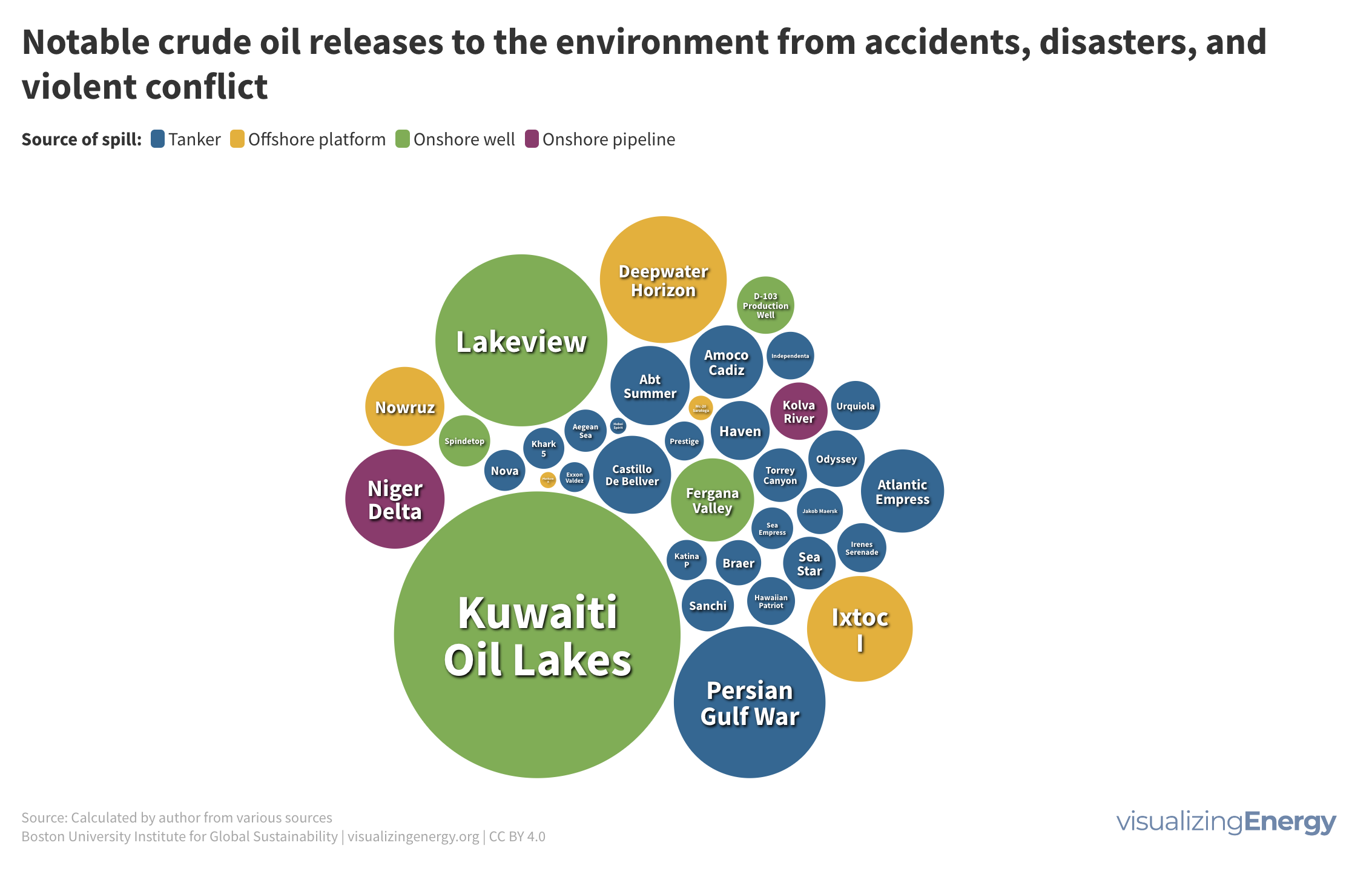
Oil spills: when, where, how big?
Since the birth of the modern oil industry in the late 19th century, tens of millions of wells have been drilled, and upwards of 1.5

Since the birth of the modern oil industry in the late 19th century, tens of millions of wells have been drilled, and upwards of 1.5

Anthropogenic carbon dioxide emissions increased from about 9,000 kilotons in 1750 to approximately 36 million tons in 2022—a 4,000-fold increase. Economic growth and the shift to fossil fuels that accompanied the Industrial Revolution drove this rise in emissions. Between 1850 and 1900, there were only two years in which emissions did not increase from the previous year.
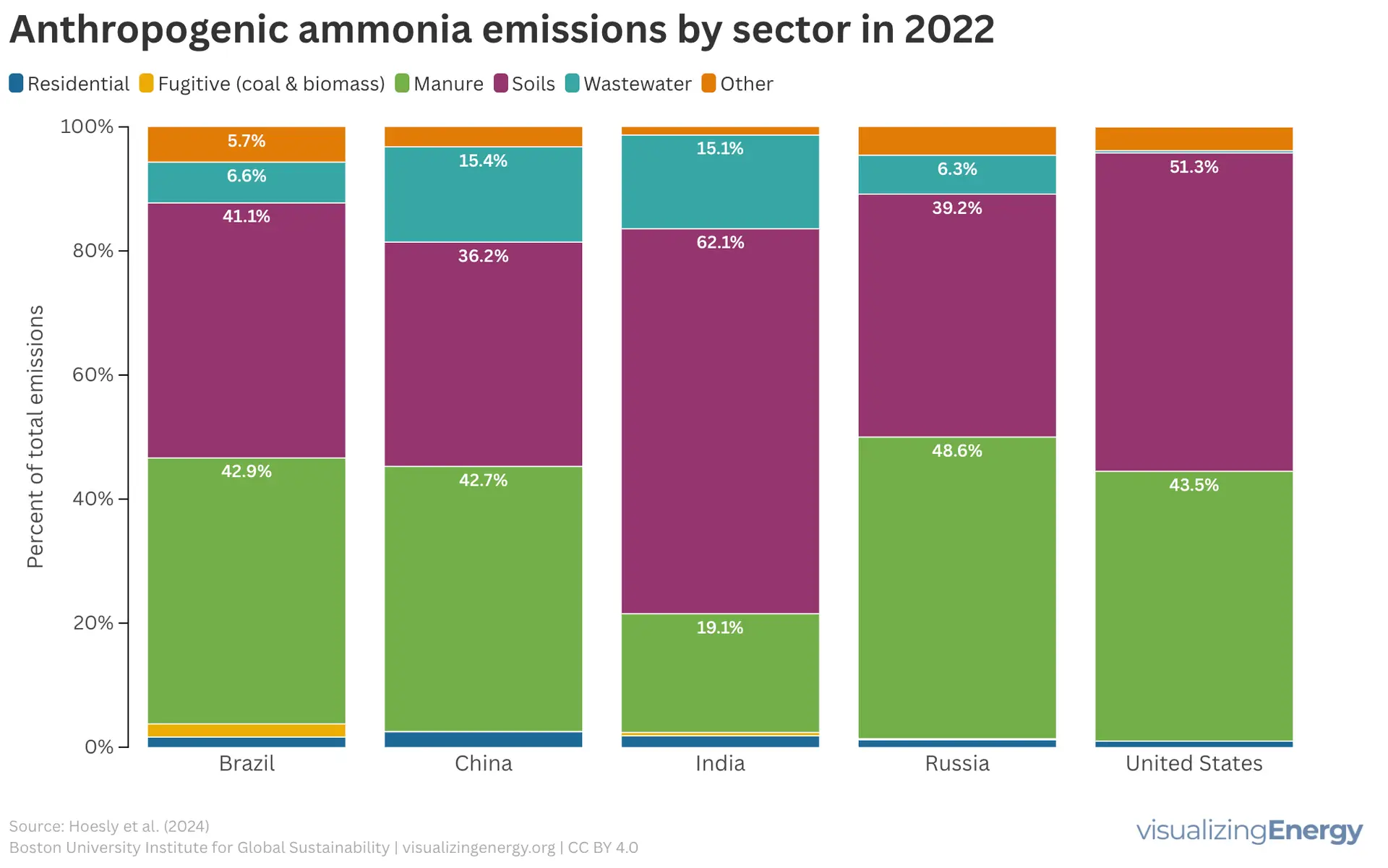
Ammonia (NH3) feeds and pollutes the world.1 The synthesis of ammonia underpins all nitrogen fertilizers, and without their applications it would be impossible to feed,
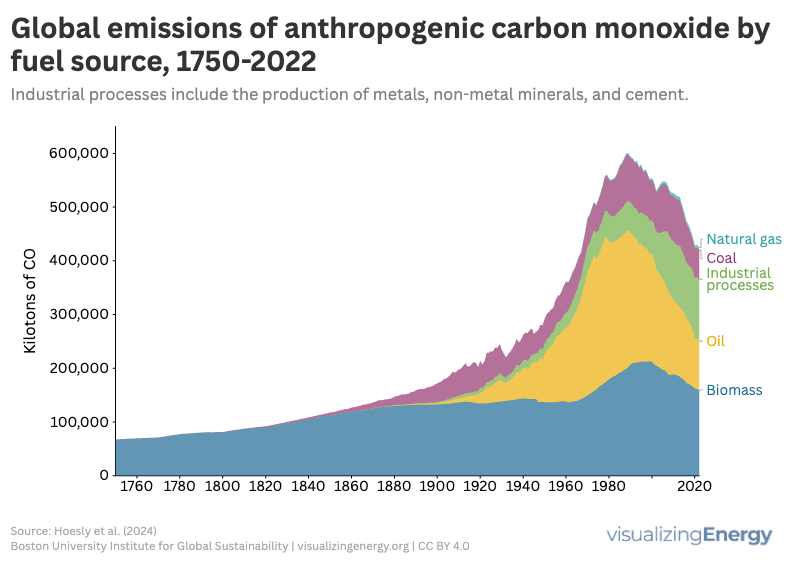
Carbon monoxide (CO) is a toxic, colorless gas from incomplete combustion of fuels, leading to potential health hazards like headaches and confusion. Residential sources produce significant CO emissions, impacting 2.4 billion people reliant on biomass. Globally, emissions peaked in 1989, but have since declined due to regulations and technological advancements in combustion efficiency.

Facebook Twitter Youtube In atmospheric chemistry, NOx (“knocks”) is shorthand for nitric oxide (NO) and nitrogen dioxide (NO₂)—the nitrogen oxides most relevant to air pollution.
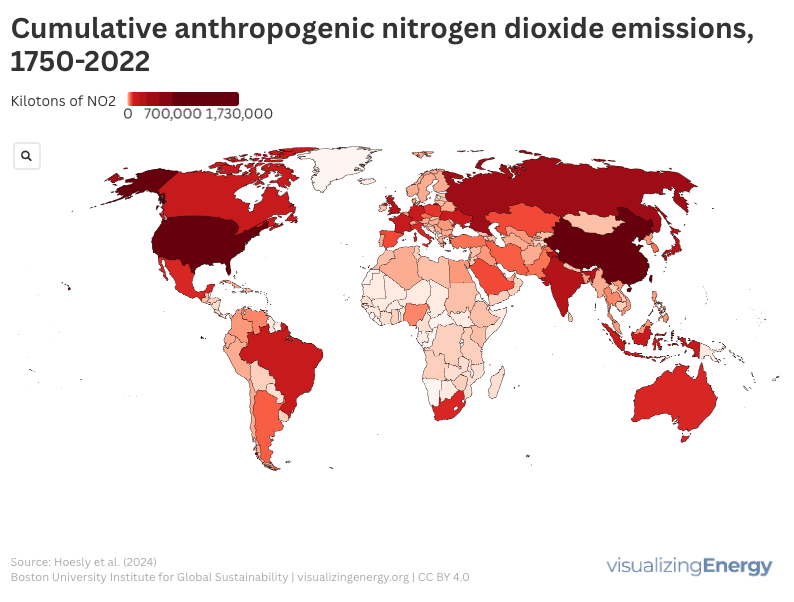
NOx, comprising nitric oxide and nitrogen dioxide, significantly impacts air pollution and health, causing respiratory issues and contributing to harmful pollutants. Mainly emitted from transportation and industrial activities, NOx levels vary globally. Efforts to reduce emissions include regulatory policies and technology advancements, along with a shift towards cleaner energy sources.
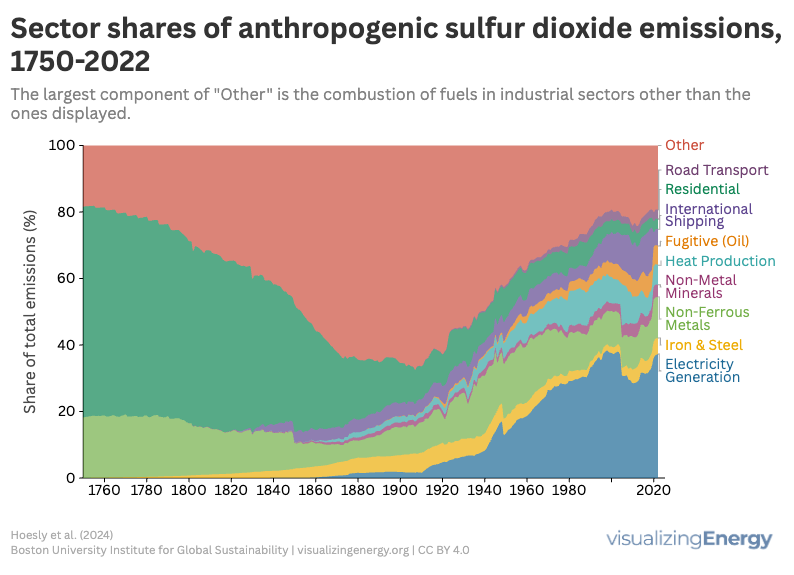
Sulfur dioxide (SO₂) is a major air pollutant produced from burning sulfur-containing fuels. It poses health risks, including respiratory issues and links to heart disease, while harming the environment by contributing to acid rain. Emissions have significantly decreased due to regulations and technology, but global reliance on fossil fuels continues to impact levels.

Airborne particulate matter (PM2.5) comprises tiny particles that pose significant health risks, including heart disease and lung cancer. Major sources include natural events and human activities, with notable geographic variations. Reductions in PM2.5 levels have been observed in affluent regions, but exposure remains high in countries like China and India, impacting public health.
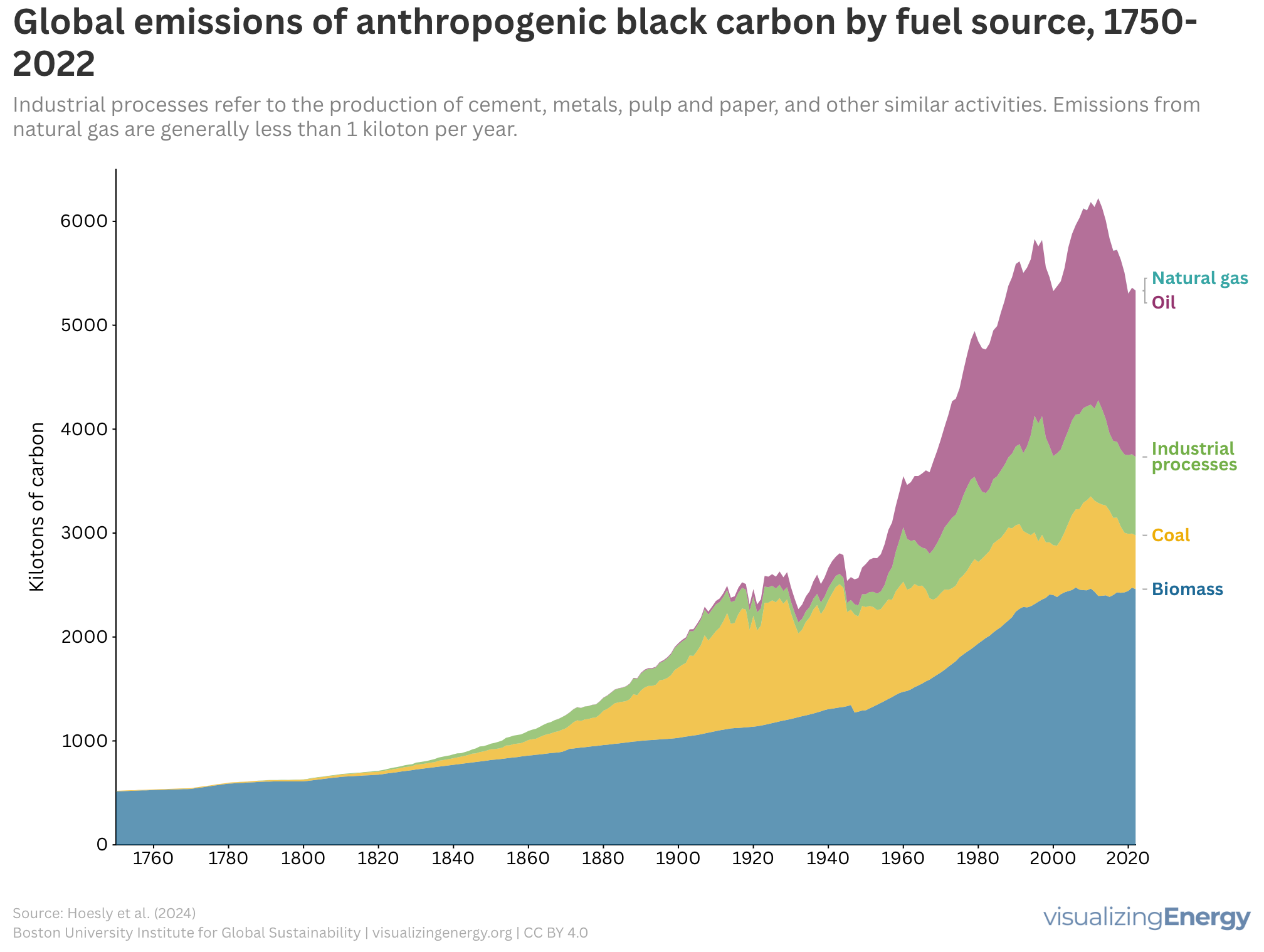
Anthropogenic black carbon, or soot, arises from incomplete combustion of organic materials, significantly impacting climate change and public health. It causes global warming, degrades air quality, and leads to various health issues. Major contributors include residential fuel usage and transportation emissions. Reducing black carbon relies on cleaner fuel access and improved combustion technologies.
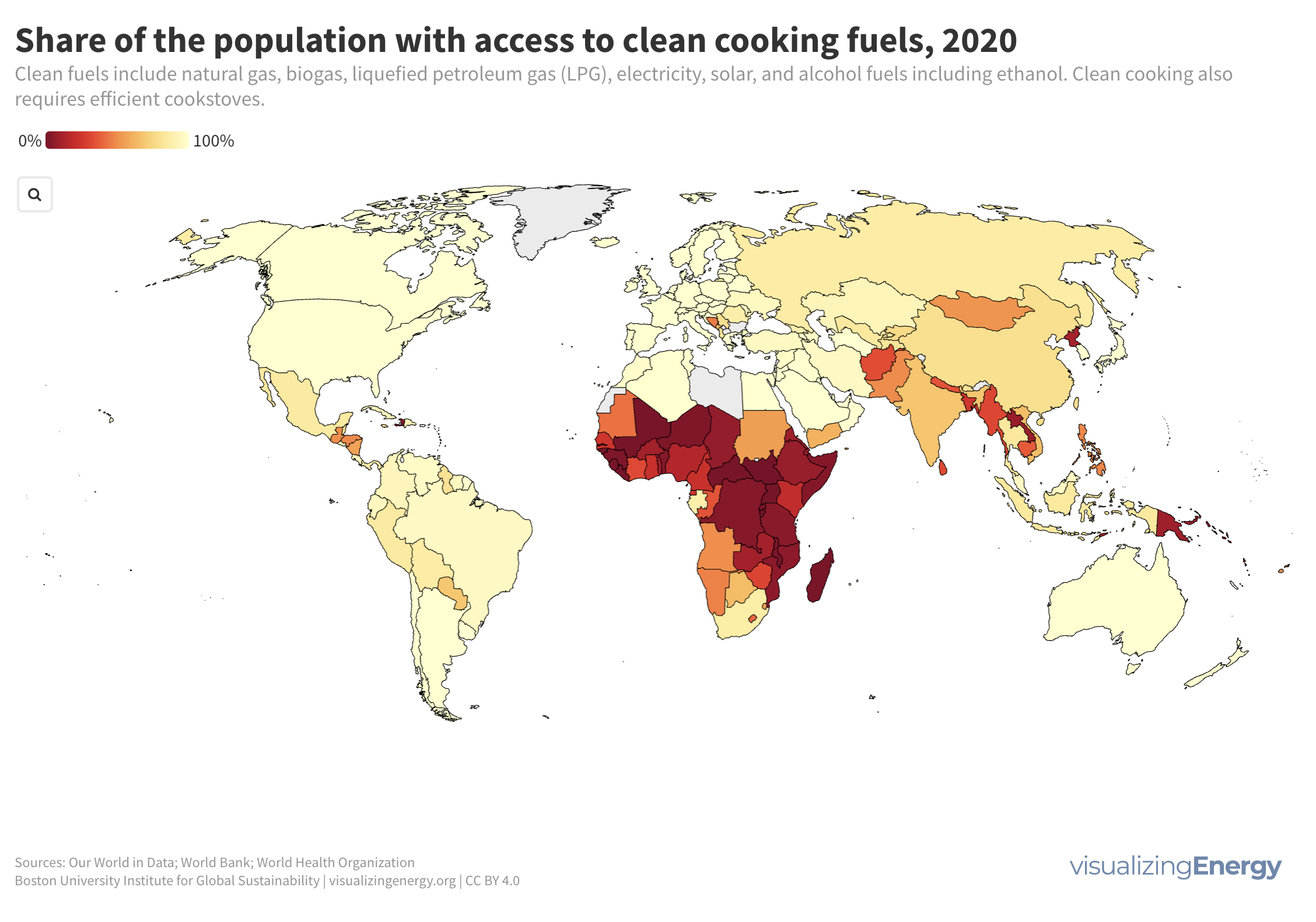
The transition to clean energy brings life-changing benefits like clean cooking services. Clean cooking uses gaseous fuels and electricity, reducing harmful emissions. However, 2.3 billion people still use polluting fuels, leading to millions of deaths annually. Access to clean cooking varies by country income and location. While global access has increased, challenges remain in many countries.